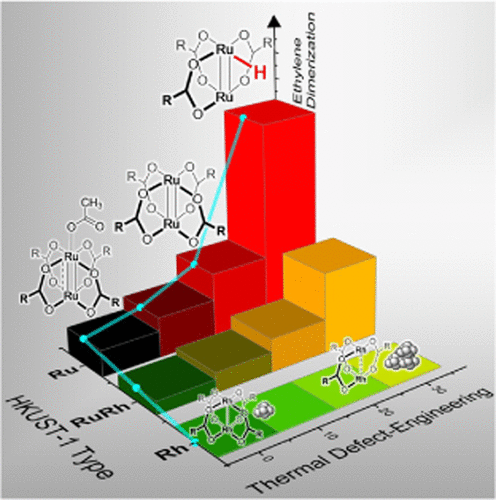Abstract of the full text:
A methodology is introduced for controlled postsynthetic thermal defect engineering (TDE) of precious group metal–organic frameworks (PGM-MOFs). The case study is based on the Ru/Rh analogues of the archetypical structure [Cu3(BTC)2] (HKUST-1; BTC = 1,3,5-benzenetricarboxylate). Quantitative monitoring of the TDE process and extensive characterization of the samples employing a complementary set of analytical and spectroscopic techniques reveal that the compositionally very complex TDE-MOF materials result from the elimination and/or fragmentation of ancillary ligands and/or linkers. TDE involves the preferential secession of acetate ligands, intrinsically introduced via coordination modulation during synthesis, and the gradual decarboxylation of ligator sites of the framework linker BTC. Both processes lead to modified Ru/Rh paddlewheel nodes. These nodes exhibit a lowered average oxidation state and more accessible open metal centers, as deduced from surface-ligand IR spectroscopy using CO as a probe and supported by density functional theory (DFT)-based computations. The monometallic and the mixed-metal PGM-MOFs systematically differ in their TDE properties and, in particular in the hydride generation ability (HGA). This latter property is an important indicator for the catalytic activity of PGM-MOFs, as demonstrated by the ethylene dimerization reaction to 1-butene.
